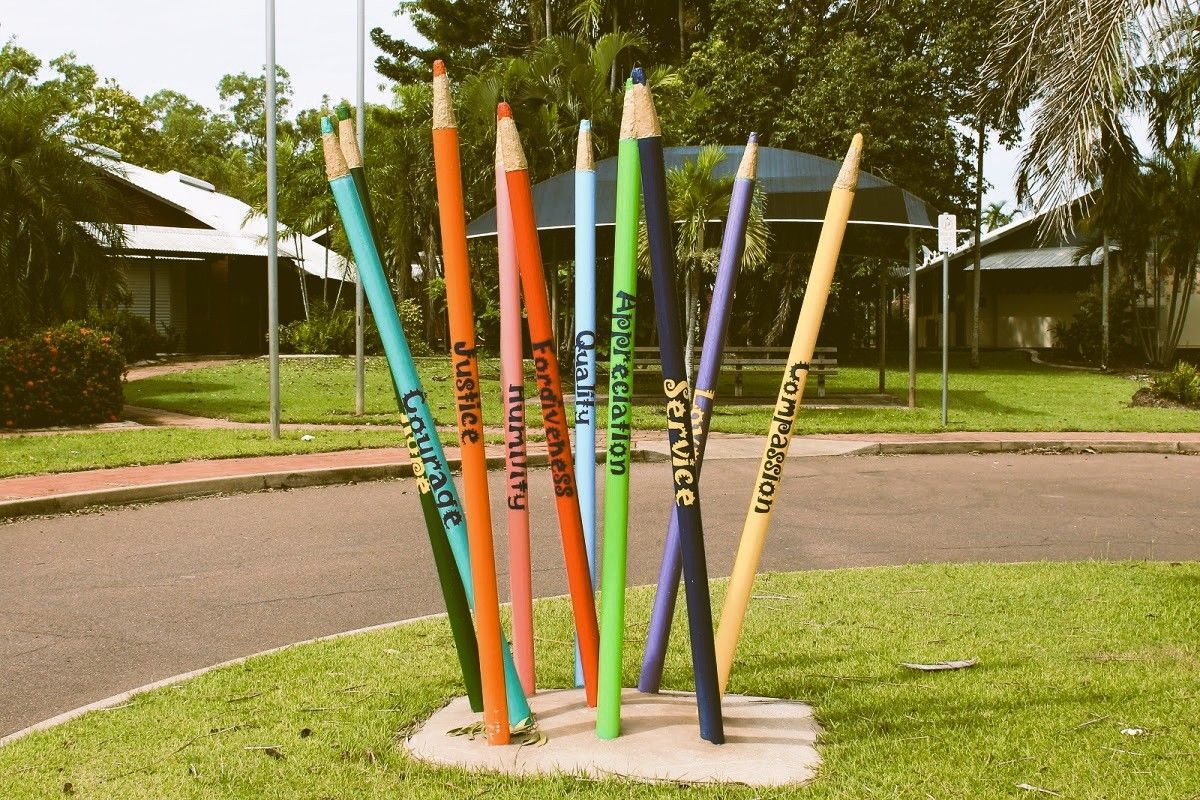Principal Thoughts// Issue 6
There is nobody more engaged with culture in a school than the Principal. It can be argued that this is the most important ingredient in the school, should be understood, valued and protected at all cost. A post grad University course I did years ago had a section on aesthetics and its relationship to school culture and this really struck a powerful note with me. Consequently, I was heavily involved in every building project during my time as principal. It is dangerous to simple import architects and accept what they produce. They are normally not teachers but we as principals are aware that attending school as a student doesn’t include the rich and sophisticated experience one has as an experienced teacher. Even if an architect has designed buildings for other schools, these are not for your own school whose culture should be unique to it.
Early in the piece, I was engaged in designing new boarding houses. Times and attitudes had change since the original houses had been built, which had served the school community faithfully. Boarding is a sophisticated challenge, with students on occasions suffering from homesickness, and particularly if they came from stations or bush communities, they may resent being “contained”. I quickly learnt that any hint of a “gaol” syndrome had to be avoided at all costs. However, the boarders needed to feel secure but this had to be moderated with an appreciation of their love of freedom. The architects had no knowledge of this so it was important that I worked with them and indeed I spent hours doing this.
At this point it is worth reflecting that no Territory Independent School is wealthy and none is backed by large foundations which are the premise of many old established schools in Australia. Therefore designers need to keep this in mind and buildings need to be cleverly and thoughtfully constructed, understanding that there will be a moderate budget. After years of building, I know this is achievable and I also know that some architects fail to understand this. Wealthy schools have vast, expensive building programs which produce impressive constructions. However, I contend that these will not necessarily produce cultural supportive aesthetics any better than a really thoughtful, moderately priced, creative, well located facility.
Back to the new boarding houses. The structures were simple, rooms were doubles and some singles, the facility was air conditioned but importantly the windows of all bedrooms had a view of the bush, to give the outlook a feeling of freedom. I ensured that the building was constructed exactly on an east/west axis to provide protection from the harsh afternoon western sun.
A couple of years down the track we built another boarding house, once again working long hours with the architect and conscious of adding improvements resulting from our experience with the first building. This building also had all rooms with a view of the bush but was situated on a north/south axis with the westerly wall protected by its proximity to a steep slope and associated trees. Living in a climate which is harsh, trees were important and had to be protected at all costs - and checked annually by an arborist.
Another couple of years and we had to site a medical centre. During the day the boarding quadrangle was beautiful - trees, grass, rocks, natural bush a view of the Todd River and Spencer Hill; which is a natural reserve marking the eastern boundary. Like most principals, I spent hours and hours planning the development of the campus trying to optimise the location of everything and consequently knew it in obsessive detail. I walked the campus early in the morning during the day and at night. It was on one of my night walks that I realised that the eastern boundary of the boarding quad, with its beautiful, natural outlook during the day, was rather forbidding at night. Spencer Hill loomed as a dark shadow against the starry Centralian sky and the Todd, which could be the scene of unwelcome activity, was simply a dark stroke of a broad nighttime brush. I had missed this aspect and now I had the perfect solution for the sighting of the Medical Centre, a place of refuge and security, which would complete the eastern boundary of the quad and add to the security and nurturing aspect of the boarders’ home. And indeed the building, constructed as a single story homestead, which still enabled the bush to be seen, achieved this admirably.
I believe it is essential that a principal really engages with the campus, continually looking for ways in which it can be improved to support culture. A humorous story about this engagement comes to mind. I was moving towards a classroom to take over a class from my deputy Chris Leesong. I became distracted in transit allowing my imagination to try and site a hall. At this point, I was slowly walking backwards towards the classroom when I went over a large granite boulder riddled with razor sharp mica. Sadly, the mica cut my arm, as if it was a razor blade, with a wound of some 200 millimetres. My deputy didn’t see the accident but wondered why I was walking at pace towards my house holding my arm. Off to the doctor and seventeen stitches later we could have a good laugh about it. What is impressive is that I still bear the scar, albeit faintly, today as a reminder of the dangers of complete obsession.
For years the school wanted a chapel. The reason was to provide a focal point for students in school worship services. The building needed to powerfully support the culture of the school, its Christian tradition and in this the building needed to really “speak” to the school community. Over months we searched every square metre of the grounds for a suitable, really meaningful site, until one Sunday it became obvious - the location to be a sentinel to the rather beautiful, Peace Garden, on the edge of the Telegraph Station National Park. Why this site didn’t emerge sooner, who knows, but it did emphasise the need to keep searching until a revelation comes.
The next issue was money to build it. Then suddenly one of our great friends and supporters offered to give us $50,000 and the idea of a bush chapel really appealed to him. We designed it ourselves, the art teacher drew it up and the building certifier, who was a parent, ensured it met regulations. But who builds a chapel for $50,000? Most school chapels I have seen would cost $1million plus, plus! However, we were going to make it happen, and so it was to be built by students, staff, old students and parents. RE lessons were dedicated to digging, painting and sawing. A parent produced a stain glass window and the chapel was designed with many meaningful symbols. Its view of the bush was spectacular and a ships bell, bought in Darwin, was hung at the doorway complete with a bell pull plaited expertly by one of our great friends. The school came to watch the altar being located as the result of the donation of a huge front end loader which gentle let down the altar, a boulder from the front of the school, under the direction of the chaplain.
The chapel probably is the most culturally powerful building in the college. It speaks clearly to the students and has brought visitors to emotional tears. It didn’t require a fortune to create but rather a deep understanding of school culture and how aesthetics can enrich this. However, it did require human determination, dedication and indeed a love for the School and what it stands for, to create it.
A school’s campus should develop as an interesting exciting place with buildings and spaces that are non aggressive, speak of welcome and celebrate the idea of individuality as we celebrate that in students. In this, colour plays a part as does shape. Any hint of anything oppressive in look should be avoided. The hope is that the school will be a place that presents a positive and welcoming atmosphere, a place where students will want to come, a school of which they can indeed be proud and when they leave will remain with them as a happy, positive memory.
Written by Chris Tudor



